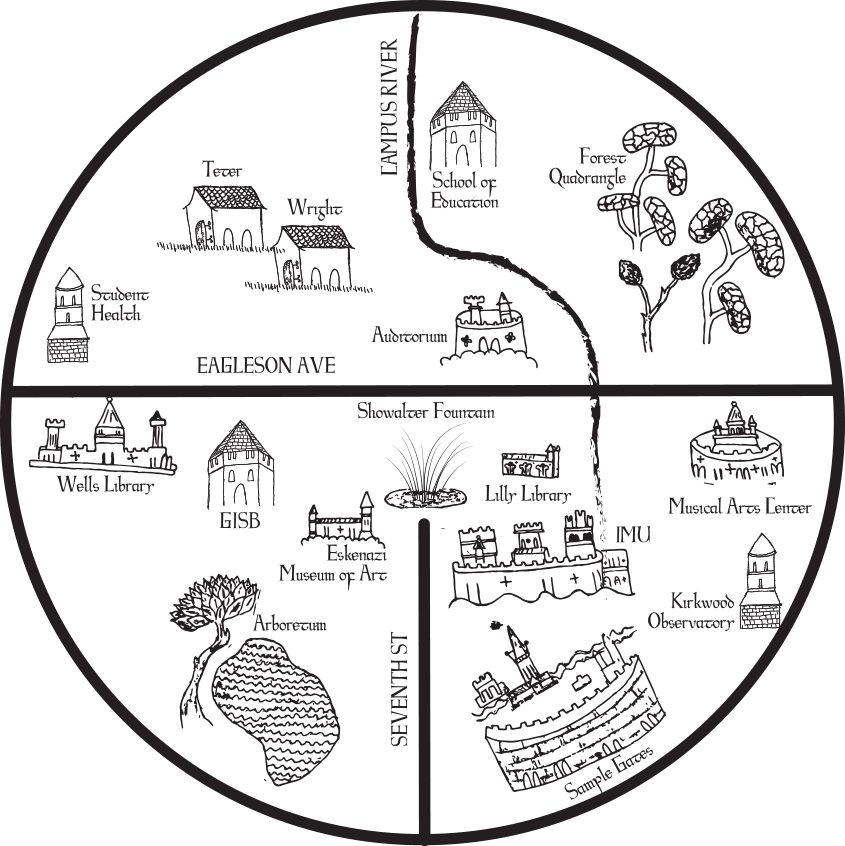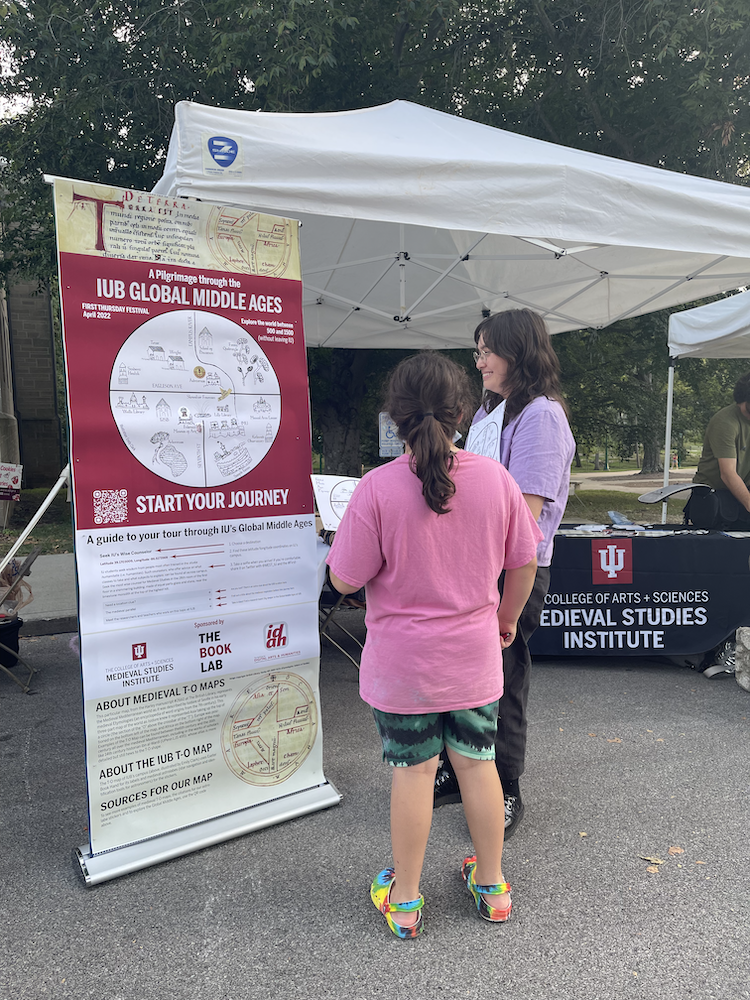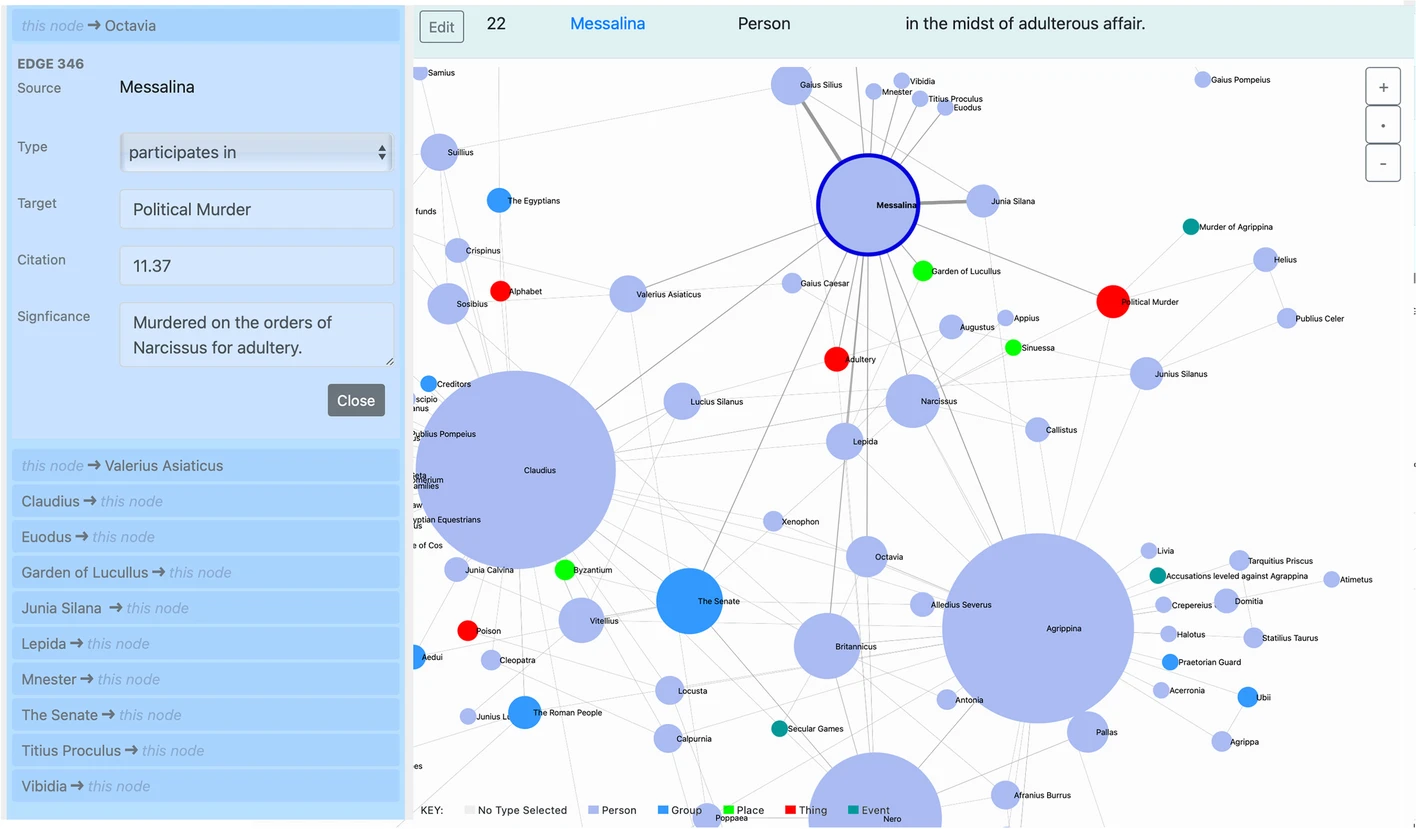
About Global Middle Ages Pilgrimage
The Global Middle Ages Pilgrimage matches pilgrimages from all over the globe undertaken between 500 and 1500 and maps them onto locations at IUB that serve a similar purpose.
Global Middle Ages Pilgrimage as Research
Popular concepts of the Middle Ages—think Game of Thrones—draw on limited, mostly European, models of the world between 500 and 1500. The Global Middle Ages movement, on which there is substantial scholarship, helps mitigate the cooptation of the Middle Ages as a platform for white supremacists and celebrates the breadth of cultural, religious and social interchange that characterized the entire world between 500 and 1500.
At the same time, it’s necessary to complicate the idea of “medieval” as global by communicating to audiences that “medieval” is a peculiarly European label and other disciplines and geographies have their own labels for the period between 500 and 1500.

Together with many colleagues from IUB, Medieval Studies sought to communicate both of those complex ideas by rooting pilgrimages that were popular between 500 and 1500 in comparable sites at IUB. For instance, a pilgrimage through the forests of 9th-century Japan had a nice parallel in Dunn Woods, a dense forested oasis on the southwestern side of IUB’s campus. We also chose to hide the geographic origin of each pilgrimage so that visitors expecting European destinations would find themselves far afield globally. Finally, we fully described the original pilgrimage location in terms suited to that geography (so 9th-century Japan was “classical Japan”, not “medieval Japan”) and provide opportunities for visitors to connect with further IUB research and teaching resources on these pilgrimages outside of the pilgrimage route itself.
Under my leadership, staff from the Medieval Studies Institute and Institute for Digital Arts & Humanities guided attendees from the Bloomington community through choosing and documenting their pilgrimages at IUB’s First Thursday Festivals in April and October of 2022.

My Role
The most comparable role is that of an editor of a collected-essay volume. I designed the geospatial activity, proposed the public-history framework, researched and wrote the introductory and concluding material, recruited researchers for some of the pilgrimages and wrote others myself, and commissioned the T-O map of the IUB campus that mimics a map form commonly used in the medieval Mediterranean.
